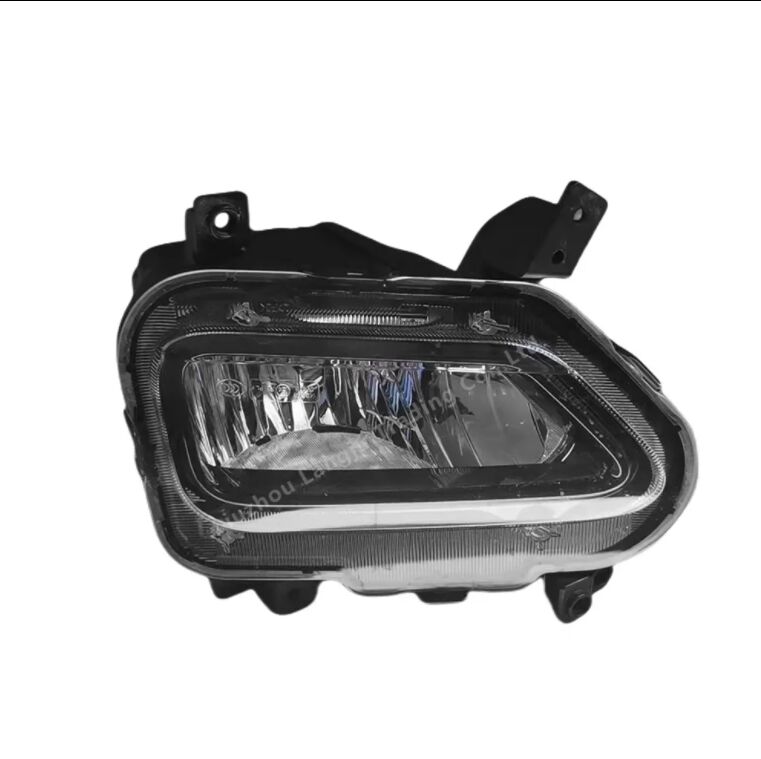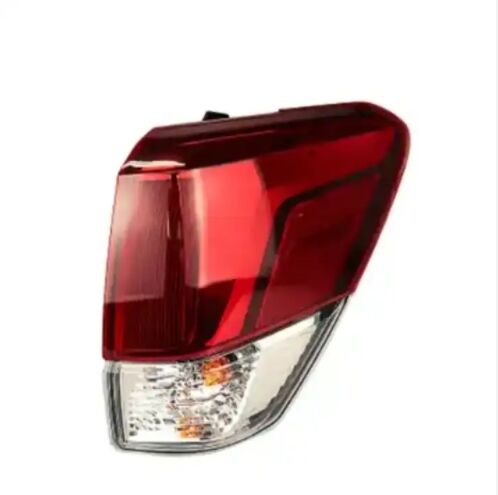What are the advantages of LED taillights over traditional ones?
LED taillights have become increasingly popular in modern cars, replacing traditional incandescent taillights in many new models. Unlike traditional taillights, which use a filament that glows when heated, LED taillights use light-emitting diodes—small, energy-efficient semiconductors that produce light when electricity passes through them. This difference in technology brings a range of benefits, from better visibility to longer lifespan. Let’s explore why LED taillights are a better choice than traditional ones.
1. Brighter and More Visible, Enhancing Safety
One of the biggest advantages of LED taillights is their brightness and visibility, which make cars easier to see on the road—especially in bad weather or low light.
- Instant illumination: Traditional incandescent taillights take a split second to reach full brightness because the filament needs to heat up. LED taillights light up immediately when you hit the brakes or turn on the lights. This split-second difference gives other drivers more time to react—up to 0.3 seconds more, which can mean stopping 10–15 feet earlier at highway speeds. This is a critical advantage in avoiding rear-end collisions.
- Clearer light: LED taillights produce a sharp, focused light that’s easier for other drivers to notice. Traditional taillights often have a dim, yellowish glow that can blend into road lights or sunlight. LEDs, on the other hand, emit a bright red or amber light (for turn signals) that stands out, even in rain, fog, or snow. This makes your car more visible, reducing the risk of accidents.
- Consistent light output: Over time, traditional bulbs dim as the filament wears down, making them less visible. LED taillights maintain their brightness throughout their lifespan, ensuring other drivers always see your brake lights or turn signals clearly.
For safety, LED taillights give drivers more time to react and make your car stand out in all conditions.
2. Longer Lifespan, Reducing Maintenance
LED taillights last much longer than traditional incandescent ones, saving you time and money on replacements.
- Durability: Traditional taillight bulbs have a fragile filament that can break from vibrations (like driving on rough roads) or sudden temperature changes. This means they often last only 1,000–2,000 hours—maybe 1–2 years for a daily driver. LED taillights have no filament; they’re made of solid-state components that can handle vibrations and temperature swings. They typically last 50,000–100,000 hours, which translates to 5–10 years or more of use. For many car owners, this means never replacing a taillight bulb during the time they own the car.
- Less frequent replacements: Changing taillight bulbs can be a hassle, especially if the taillight assembly is hard to reach (some cars require removing interior panels or trunk liners). With LED taillights, you’ll rarely need to do this. This is a big plus for busy drivers, older adults, or anyone who hates car maintenance.
The long lifespan of LED taillights means fewer trips to the auto shop and less money spent on replacement bulbs.
3. Energy Efficiency, Saving Fuel
LED taillights use far less energy than traditional ones, which helps save fuel and reduces strain on your car’s electrical system.
- Lower power consumption: Traditional incandescent bulbs waste a lot of energy as heat—only about 10% of the electricity they use becomes light. LEDs are much more efficient: they convert 80–90% of electricity into light, using 75–80% less energy than incandescent bulbs. For example, a traditional brake light bulb uses about 21 watts, while an LED brake light uses only 5 watts.
- Less load on the alternator: Your car’s alternator generates electricity to power lights and charge the battery. Because LED taillights use less energy, the alternator doesn’t have to work as hard. This reduces the engine’s workload, which can slightly improve fuel efficiency—especially in cars with many electrical features (like electric windows or infotainment systems).
While the fuel savings might be small (a few miles per gallon), every bit adds up over time, especially for drivers who log many miles.

4. Design Flexibility for Better Aesthetics
LEDs are small and versatile, allowing car designers to create unique, stylish taillight shapes that aren’t possible with traditional bulbs.
- Sleeker, more modern looks: Traditional taillights need space for bulky bulbs and reflectors, limiting their design. LEDs are tiny (about the size of a grain of rice), so they can be arranged in thin strips, complex patterns, or even 3D shapes. This lets cars have slimmer, more aerodynamic taillights that look modern and eye-catching. For example, many luxury cars use LED taillights that stretch across the entire back of the car, creating a distinctive “light bar” look.
- Customizable light patterns: LED taillights can be programmed to light up in sequences. For example, some cars have turn signals that “blink” in a sweeping motion (from one side to the other), making them more noticeable. Brake lights can use brighter LEDs in the center and dimmer ones around the edges, creating a focused, high-visibility glow. These designs don’t just look good—they also make the car’s intentions (stopping, turning) clearer to other drivers.
- Integration with other features: LEDs work well with advanced safety features like adaptive taillights. These taillights brighten or flash more rapidly during hard braking, warning other drivers of a sudden stop. Traditional bulbs can’t handle these quick changes in brightness without burning out, but LEDs can.
LED taillights let cars look better while also improving functionality.
5. Better Performance in Extreme Conditions
LED taillights handle tough weather and temperatures better than traditional ones, ensuring they work when you need them most.
- Resistance to cold and heat: Traditional bulbs can fail in extreme cold because the filament becomes brittle, or in hot weather because the bulb overheats. LEDs are unaffected by temperature swings—they work perfectly in sub-zero winters or scorching summers. This reliability is crucial for drivers in harsh climates.
- Less fogging and moisture damage: Traditional taillights produce a lot of heat, which can cause condensation to build up inside the lens (making the light look foggy). LEDs produce little heat, so condensation is less likely. When moisture does get in, LEDs are less likely to short out than traditional bulbs, which can fail if they get wet.
In rain, snow, or extreme temperatures, LED taillights keep working reliably, ensuring you stay visible.
FAQ
Are LED taillights more expensive than traditional ones?
Yes, LED taillight assemblies cost more to buy (about $50–$200 more than traditional ones). But their long lifespan and lower maintenance costs make them cheaper over time.
Can I replace my traditional taillights with LED ones?
Yes, but you might need to buy LED-compatible bulbs or a new taillight assembly. Some cars require a resistor to prevent LED taillights from flickering (due to their low energy use). Check your car’s manual or ask a mechanic for help.
Do LED taillights dim over time?
They can, but very slowly. Most LED taillights lose only 10–20% of their brightness after 50,000 hours—still bright enough to be visible. Traditional bulbs dim much faster and burn out completely.
Are LED taillights repairable if they fail?
Sometimes. If a single LED in the assembly burns out, a mechanic might replace just that LED. But in many cases, the entire assembly needs to be replaced (since LEDs are soldered into the unit). However, this is rare because LED assemblies last so long.
Do LED taillights work with automatic braking systems?
Yes, and they work well. Many modern cars use sensors that rely on the car’s own taillights to detect other vehicles. LED taillights’ bright, instant light helps these systems work more accurately.

